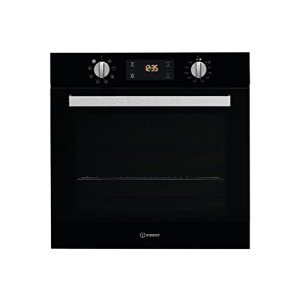What's The Job Market For Built Under Single Oven Professionals?
페이지 정보

본문
Understanding Built Under Single Ovens: A Comprehensive Guide
Built-under single ovens are ending up being significantly popular in contemporary kitchen styles, especially in homes with limited area. They are created to fit seamlessly below counter tops, supplying a sleek and tidy appearance while offering the exact same performances as conventional ovens. This short article explores the advantages, features, setup pointers, and maintenance of built-under single ovens.

What is a Built Under Single Oven?
A built-under single oven is a type of oven that is specifically designed to be set up below the kitchen counter top. Unlike conventional freestanding or wall ovens that inhabit more area, built-under designs incorporate directly into kitchen cabinets, suitable for taking full advantage of kitchen effectiveness without jeopardizing on visual appeals.
Key Features of Built Under Single Ovens
| Function | Description |
|---|---|
| Size | Usually measures 60cm broad, fitting standard kitchen cabinetry. |
| Kind of Cooking | Convection, mix (microwave), steam, and more. |
| Controls | Digital displays or traditional knobs for easy operation. |
| Energy Efficiency | Many designs are A-rated, guaranteeing low energy consumption. |
| Self-Cleaning | Some ovens include self-cleaning functions for convenience. |
| Safety Features | Consists of kid safety locks and automatic shut-off functions. |
Advantages of Built Under Single Ovens
- Space-Saving Design: Ideal for little cooking areas, they conserve vertical space while supplying sufficient cooking capacity.
- Availability: Positioned at a hassle-free height, built-under ovens lower flexing, making them much easier to use for those with movement issues.
- Visual Appeal: Their combination within cabinets boosts the kitchen's overall look, using a minimalist method.
- Flexibility: Available in different styles and colors, built-under ovens can complement any kitchen design.
- Boosted Cooking Features: Many models come with advanced cooking functions, including multiple cooking modes and smart technology combination.
Installation Tips for Built Under Single Ovens
Installing a built-under oven involves essential steps to make sure correct performance and safety. Below are some suggestions for installation:
- Check Measurements: Before acquiring, guarantee the oven fits the designated area by measuring the installation location.
- Follow Manufacturer Guidelines: Each oven features particular setup directions that require to be followed closely.
- Ensure Adequate Ventilation: Built-under ovens should have correct airflow. Ensure that ventilation requirements are met according to the maker's specifications.
- Secure Electrical Connections: It's vital to have the oven plugged into a devoted circuit. Employing a professional electrician is often recommended.
- Leveling the Oven: Before protecting the oven, ensure it is leveled to prevent unequal cooking.
Upkeep Tips for Built Under Single Ovens
Keeping your built-under oven in peak condition needs regular maintenance. Here are some suggestions:
- Regular Cleaning: Clean the oven routinely using appropriate cleaners to prevent build-up and stains.
- Examine Seals: Inspect the door seals for wear and tear, and change them if needed to keep performance.
- Use the Self-Cleaning Feature: If readily available, utilize the self-cleaning function to reduce manual scrubbing.
- Calibrate Temperature Settings: If you notice uneven cooking, consider recalibrating the oven's temperature level settings.
- Examine the Ventilation: Regularly examine that the vents are unblocked to guarantee appropriate airflow.
Frequently Asked Questions (FAQs)
1. What is the difference between built-under and built-in ovens?
Built-under ovens are developed to fit underneath a counter top, while built-in ovens are generally set up at eye level into the kitchen cabinetry. Both conserve area but serve different height preferences.
2. How do I know which built-under oven is right for my kitchen?
Think about the size of your kitchen, the cooking features you require, and your spending plan. Determining available area before shopping is crucial.
3. Can built-under ovens be set up in a little kitchen?
Yes, built-under ovens are ideal for little kitchen areas as they inhabit less vertical area and integrate well into cabinetry.
4. Are built-under ovens readily available in different designs?
Yes, built-under ovens been available in numerous designs, consisting of black, stainless-steel, and white surfaces, enabling you to match them with your kitchen design.
5. Do built-under ovens require unique installation?
While they share similarities with traditional ovens, it is suggested to follow manufacturer installation standards for ideal security and efficiency.
Built under single ovens combine functionality and design, making them an outstanding choice for modern-day cooking areas, specifically those with minimal area. By understanding their features and upkeep requirements, house owners can delight in the advantages of these ovens for years to come. Whether you are remodeling your kitchen or just seeking a useful cooking home appliance, built-under ovens supply an ideal service that fulfills both visual and culinary needs.
In today's fast-paced world, efficient kitchen devices like built-under single ovens are more than simply benefits; they are essential tools that help simplify cooking and boost the culinary experience.
- 이전글The 10 Most Scariest Things About Mortise Lock Replacement 25.07.21
- 다음글Do You Think You're Suited For Buy Real Money? Take This Quiz 25.07.21
댓글목록
등록된 댓글이 없습니다.

